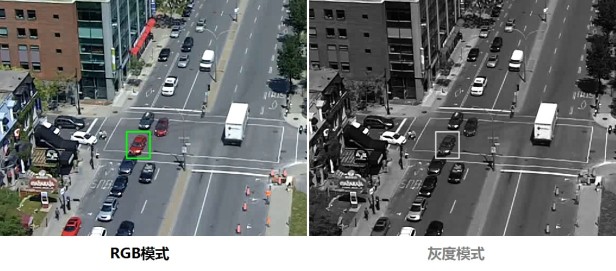Editor’s Note: In this issue, data experts from SalvationDATA will introduce an essential technique, target detection, used for video retrieval. Among all the techniques used today for target detection, background modeling, featuring less calculation, low storage memory occupation, real-time and high robustness, is the most popular one.
Cameras are deployed, nowadays, on almost every street thanks to the Surveillance Web project that requires every corner to be monitored. And the implementation of this project requires massive amounts of video clips to be stored. So how we can extract from it valuable leads that can help investigators crack a case becomes crucial.
1 Video Retrieval Efficiency Improved with Good Target Detection Algorithm
1.1 What is target detection?
To put it simply, target detection, as an essential part of video retrieval, is a process of identifying objects of interest by marking the area related to a video clip with filters. And the other irrelevant scenes will be automatically sieved when a filter is applied, thus improving video retrieval efficiency.
1.2 Purpose of Target Detection
- Target detection helps filter irrelevant video clips.
- It is vital that a scene with moving objects is detected, because we can then follow its change, either it is its location or shape, in the next frame, which saves us the trouble of blind searching.
- Once objects are detected, its type(human or vehicle) can then be confirmed with a special algorithm(shown in Figure 1).
- Color analysis and image matching can be applied to detected objects.

Figure 1
1.3 Target Detection Techniques
Commonly used techniques for target detection include background modeling, frame difference, optical flow, motion competition, motion model, time entropy etc.
Among them, frame difference requires a dynamic setting of the time interval for differentiation. For objects with slow motion, a longer time interval is necessary, or crucial information will be omitted. Optical flow is with low anti-noise performance, its processing speed can be rather low unless proper hardware unit is installed. So it makes sense that background modeling, which will be introduced below, is the most popular one.
2 Background Modeling
2.1 What is background modeling?
The background objects, in a video, indicate the ones that are static or with slow motion, and the foreground objects are the ones that are moving. Background modeling is, in effect, a process of objects classification, the aim of which is to discern if a pixel can be classified as the background.
An effective background modeling algorithm must take into account the following factors:
A environmental variation like illumination variation
B picture flutter
C identification of clustered objects like leaves
D changes of background objects
E fast speed
2.2 Background Modeling Methods
The models that can be used for background modeling include Single Gaussians Model, Gaussian Mixture Model, Codebook, SOBS, Color, VIBE, SACON, PDF etc.. Background modeling algorithms, too, have its drawbacks, though it does offer high efficiency. Different situations call for different choice of algorithm.
2.3 VIBE algorithm
VIBE(Visual Background Extractor), a typical background modeling method, was proposed by Olivier Bamich in 2009. The algorithm excels in its constant update capability. Pixels to be changed are sampled randomly, and neighboring pixels are randomly selected for the update. And, when pixel variation model cannot be determined, its strategy is updated as well. It can, to some extent, simulate the uncertainty of pixel variation.
Characterized by less calculation, low storage occupation, real-time and high robustness, VIBE, while improved, can be used to deal with such situations as sudden illumination variation and movement.
3 Data Pre-processing
Data pre-processing should be done before target detection is executed in order to reduce calculation work. Therefore, images with RGB format shall be converted to gray scale while dealing with frame level data. Generally, the color loss caused by the conversion won’t have much effect on the detection result, but attention still must be paid to some particular situations. For example, the type of color that is in stark contrast with the background under RGB mode may be less obvious under gray scale mode(shown in figure 2).


Figure 2
Several tests showed that minor variation under a green channel of RGB is far easier to be identified than when it is converted to gray scale. (shown in figure 3)

Figure 3
4 Conclusion:
A new algorithm needs time and inspiration. So, a more reliable solution, for now, is to improve the processing efficiency of software and the performance of its hardware.
Nowadays, surveillance cameras are everywhere. Traditional ways of locating clues fall far short of today’s efficiency requirements. The background modeling technique proposed by SalvationDATA can help find evidence at a much faster speed, thus enhancing case handling efficiency. The technique introduced here in this issue has already been integrated into our DVR forensics solution VIP, which is having summer giveaway promotion now, contact us for more information!
